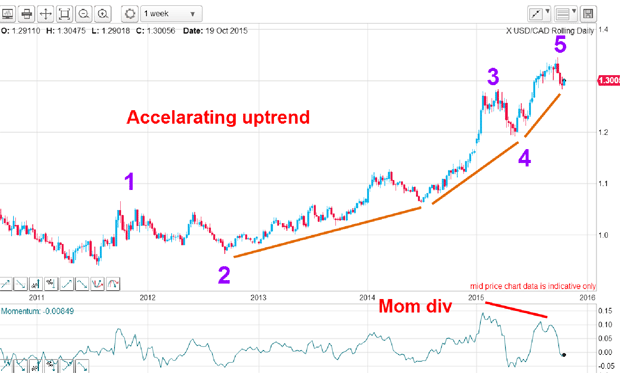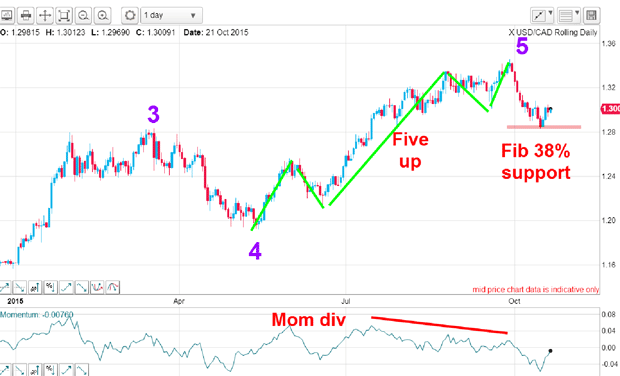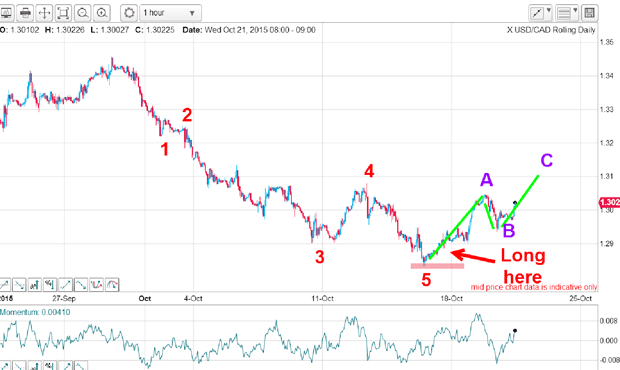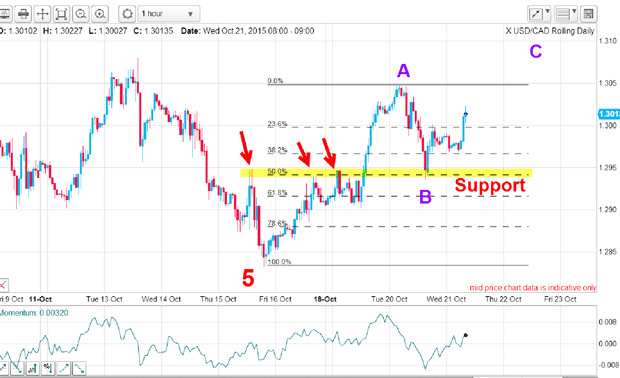My split-bet strategy has guaranteed me profits
Careful use of the split-bet strategy can lock in profits no matter what happens. John C Burford explains how it's done.
You've entered a market and it is going your way nicely. But soon it runs into turbulence and you see your hard-won paper profits vanish before your eyes. Do you sell out and salvage at least some of the gains? Or do you close your eyes and hold tight, hoping for the best?
Of course, a professional trader does neither. That person has a plan they made before entering the trade and unless something very dramatic occurs to change the roadmap along the way, they stick with that plan through thick and thin.
An important decision for any trader near the start of their career is deciding in which time frame they wish to operate. Many new traders are drawn to the adrenalin-filled world of day-trading, where typically a profit of tens of pips is the goal. The aim is to be flat (no position) at the end of the day and anywhere from a few trades to tens of trades are completed.
MoneyWeek
Subscribe to MoneyWeek today and get your first six magazine issues absolutely FREE

Sign up to Money Morning
Don't miss the latest investment and personal finances news, market analysis, plus money-saving tips with our free twice-daily newsletter
Don't miss the latest investment and personal finances news, market analysis, plus money-saving tips with our free twice-daily newsletter
But for me, that seems like too much like hard work for trying to pick up dimes in front of steamrollers. You need to be constantly glued to your screen and I have better things to do than that.
My style of trading is a combination of swing trading and position (long-term) trading, where I am looking to capture most of a big swing. My ideal swing trades last a few days or a few weeks. And my position trades usually last a few months ( unless they're stopped out first).
So how do I combine these two styles of trading? Simply by using my split-bet strategy.
How my split-bet strategy works
The Canadian economy is dominated by the commodity complex and is a major producer of raw materials from crude oil to iron ore to gold to grains, and so on.
Naturally, the value of its currency is a reflection of the price and demand for its products and as the world knows, commodity prices have been hammered. That has put enormous pressure on the loonie.
Below is a long-term weekly chart showing the accelerating weakness of the loonie. Since mid-2014, when commodity prices likewise started their free-fall, the trend has been explosive. Since then USD/CAD has gained by 27%. Naturally, a long-term position trade taken anywhere in 2013 and 2014 would now be in considerable profit.
On the chart, I have placed my Elliott wave labels from the major low in 2011. Wave 2 sports a typical A-B-C form, while wave 3 is a typical long and strong motive wave. At wave 5, there is a momentum divergence, which signifies the rally was running out of steam:

So let's zoom in on the shorter-term: on this daily chart, my purple wave 5 also is made up of its own five waves up with all the typical characteristics of a complete impulsive wave and with a nice momentum divergence at the top. With this information, I reckoned the 1.3457 high made on 29 September was the definitive top, leading to a move down.
But I also needed to know what form the decline would take, because its character, as it emerged, would indicate to me whether the decline was impulsive or corrective. Naturally, the outlook for these two polar opposites would be entirely different.
If impulsive, I could forecast even lower prices ahead. But if corrective, I could infer that higher prices are in store. But for now, the decline has been turned at the Fibonacci 38% support level.

So let me describe how I use my split-bet strategy with a real live campaign. Below is a chart showing the decline on the hourly.
I have a nice five down with wave 5 into Fibonacci support. I was looking for a long entry and when the market moved above the 1.29 level last Friday, I pounced.
After some consolidation, the market followed my script and moved sharply higher on Monday. I then reckoned that was wave A of an eventual A-B-C relief rally. Because the decline off the 29 September high was very hard, I pencilled in a substantial rebound and a long trade, although counter-trend, was justified:

So with momentum very overbought on Monday, I took profits on one half of my position and banked them. Next, I moved my protective stop on the remainder up to break even. So whatever happened, I was guaranteed a net profit on this campaign a very satisfying position to be in.
This morning, the market is bouncing up off yesterday's low, which now confirms my wave B label. Of course, I had the option of restoring full long position near the wave B low and this is where I did it:

Note that wave B was turned right on the Fibonacci 50% level, which was also chart support (established from the previous highs marked with arrows).
So now I have a full long position again (and with a profit in the bank) and looking for a move up in wave C where I will look to take full profits and consider reversing and going short.
By using my split-bet strategy in any time frame, you can put the odds of trading success firmly in your hands.
Get the latest financial news, insights and expert analysis from our award-winning MoneyWeek team, to help you understand what really matters when it comes to your finances.
John is is a British-born lapsed PhD physicist, who previously worked for Nasa on the Mars exploration team. He is a former commodity trading advisor with the US Commodities Futures Trading Commission, and worked in a boutique futures house in California in the 1980s.
He was a partner in one of the first futures newsletter advisory services, based in Washington DC, specialising in pork bellies and currencies. John is primarily a chart-reading trader, having cut his trading teeth in the days before PCs.
As well as his work in the financial world, he has launched, run and sold several 'real' businesses producing 'real' products.
-
 The shape of yields to come
The shape of yields to comeCentral banks are likely to buy up short-term bonds to keep debt costs down for governments
-
 The sad decline of investment clubs – and what comes next
The sad decline of investment clubs – and what comes nextOpinion Financial regulation and rising costs are killing off investment clubs that once used to be an enjoyable hobby, says David Prosser